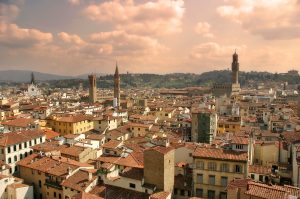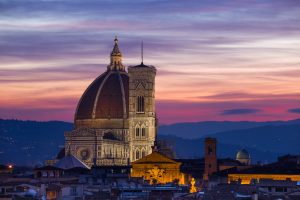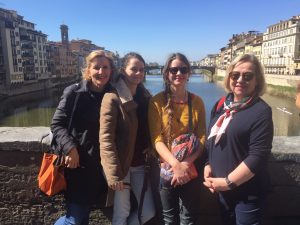Discover Florence

A guided tour of the historic centre: the best way to start your stay in Florence!
This guided tour is designed for those who are new to the history of Florence, and want to benefit from the knowledge of an official guide to approach the city and understand its artistic reputation.
The tour with your private guide is a walk through the historic centre. It’s a journey between eras, from Roman Florentia to the city of today: from the most famous and visited places to the strangest and least touristy corners. A mix of art and history, architecture and crafts, Medici and Renaissance, traditions, gastronomy and good advice, making this tour the starting point for your Florentine journey. Let your guide’s experience be your guide!
The Cathedral of Santa Maria del Fiore and the Dante quarter

The tour with your private guide begins in the religious centre of the city, in Piazza del Duomo, surrounded by magnificent monuments. You’ll get a good introduction to these monuments: the Baptistery of San Giovanni and the gilded bronze door by Lorenzo Ghiberti, the majestic Cathedral (still one of the largest churches in Europe), the prodigious Dome (Duomo), designed by the architect Brunelleschi in the 15th century, and Giotto’s elegant Campanile.
Through a maze of narrow, lesser-known streets, we are plunged into the medieval quarter, with the clearly visible traces of the old tower-houses, the rivalries between the families of the rich Florentine merchants, and the difficult period of the struggles between the Guelfs and the Ghibellines. It’s a journey back to the time of Dante Alighieri, the ‘divino poeta’ who founded Italian literature.
Halfway along the route, if you’re up for it, I’d like to suggest a quick stop in a typical place that I love: how can you be in Florence and not enjoy a good Caffè italiano at the bar, as Italians are wont to do? It’s a quick, fun stop, and an opportunity for some good gastronomic advice!
Piazza della Signoria et Ponte Vecchio

The guided tour of the historic centre continues in the political centre of Florence, and the famous Piazza della Signoria. The square is flanked by 16th-century statues by the great sculptors of the Florentine Renaissance. The hero Perseus by the great goldsmith Benvenuto Cellini, the imposing Fountain of Neptune by Bartolomeo Ammannati (ironically nicknamed “Biancone” by the Florentines), and the Rape of the Sabine women by Giambologna are just a few examples.
This is also where Michelangelo’s famous statue of David has remained for centuries. The original is in the Galleria dell’Accademia. The square is a veritable open-air museum, a triumph of art and architecture, where most of the works were financed by Duke Cosimo I de’ Medici. This is an opportunity to learn more about the statues, their political significance and the relationship between Florentine artists and the Medici family.
At the centre of the square is the austere architecture of the Palazzo Vecchio, a sort of medieval fortress that was the most important civil building in medieval Florence, and which is still today Florence’s Town Hall. Since 1537, the Palace has been the residence of the Medici family, with a 1200m2 salon designed to celebrate the Medici dynasty.
In another guided tour, I suggest you visit the interior of the Palazzo Vecchio.
From here, crossing the courtyard of the famous Uffizi Museum, we reach the River Arno and the most famous and oldest of the Florentine bridges: the Ponte Vecchio. Since 1565, the small houses on the Old Bridge have housed a host of goldsmiths’ shops. The view from here is magnificent. Your gaze wanders over the Florentine hills towards the countryside.
Loggia del Porcellino and Piazza della Repubblica
Continuing to avoid the main streets, we arrive at the small square of the Mercato Nuovo. Here a large Loggia, built in the 17th century to sell precious products, now houses the leather market. In front of the loggia is the famous “Porcellino” fountain, chosen as the city’s good luck charm by Florentines and tourists alike.
The traditional ritual is to rub its snout with the flat of your hand and put a coin in its mouth!
The elegant and fashionable Piazza della Repubblica, adorned with historic cafés (the Caffè Gilli dates back to 1733), will be the last stop on our walk. The square conceals the remains of the Forum, which tells the story of the city’s Roman origins. The modern architecture of the palaces celebrates the period when Florence was the capital of Italy.
Don’t hesitate to contact me!
INFO
Jours disponibles: tous les jours
Horaire: 9h-20h30, selon la saison.
Durée: 2h – 3h
Tarif: à partir de 70 €/h.
